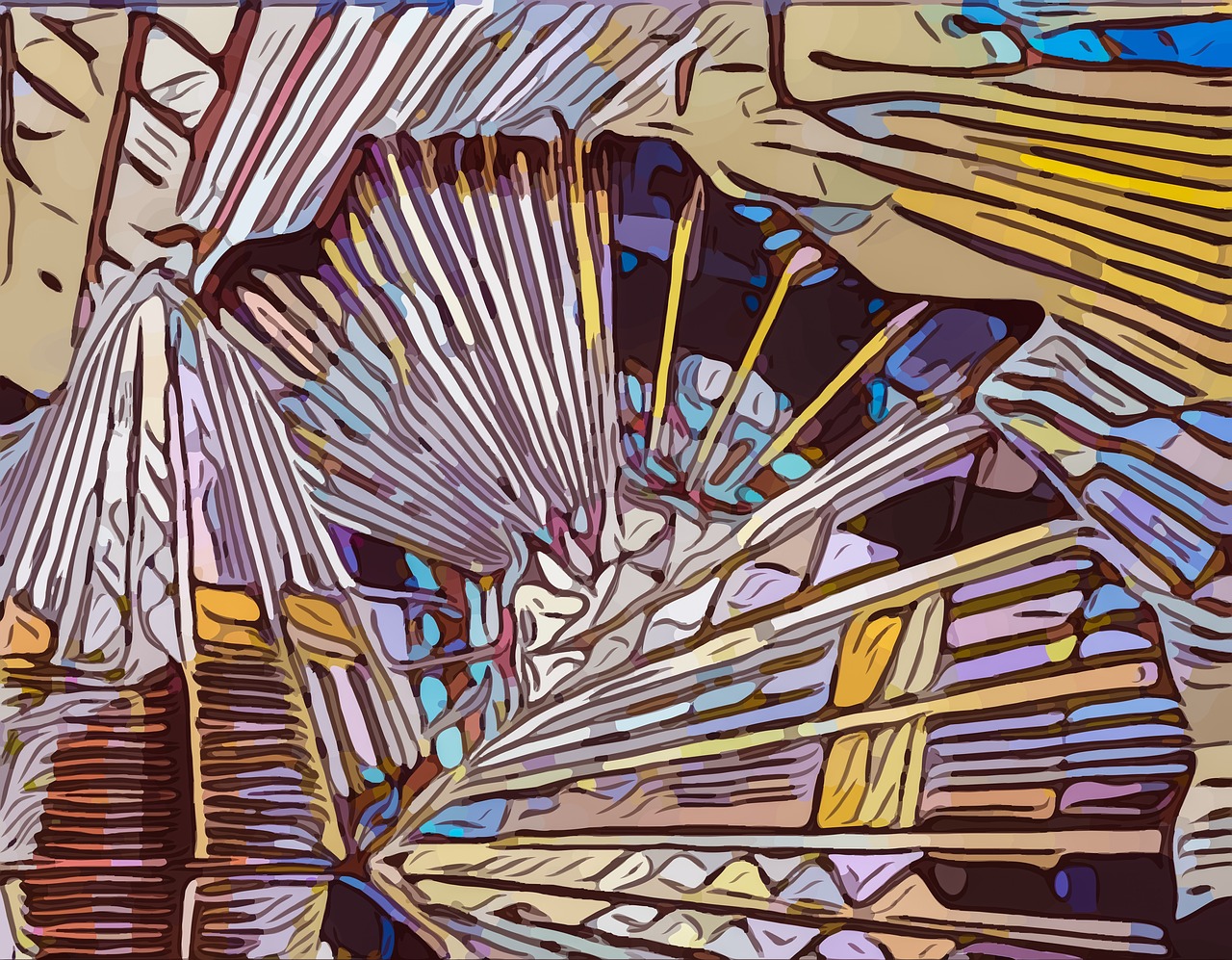When students start to write creatively for the first time, they often default to abstractions. It’s an easy thing to do. Abstractions are familiar, safe, and distanced from the self. They’re often what first come to our minds. But they rarely make for compelling writing. One of the first things I do with my students is encourage them to push past abstractions and dig for specific sensory details. I tell them, the way my MFA professor told me, to lean into the power of the natural object.
Despite repeatedly hearing my professor’s advice to focus on imagery and objects, I didn’t fully internalize the lesson until I began seriously studying video games and learned about environmental storytelling. In the gaming community, environmental storytelling is a term for embedding narrative through environment, making it so that a player can learn about the story without it impeding progression through gameplay. What’s great about environmental storytelling is that it can do narrative work much more efficiently and effectively than exposition. Instead of stopping the game to tell the player what is happening and where we are, the objects work in the background, building for us a world with story and character without a single word. This allows us to build connections, make jumps, and fill in gaps, thereby becoming active participants in the story.
When I think back to the most powerful writing I’ve read, I always think of objects: the ears “like dried peach halves” in Carolyn Forche’s “The Colonel,” the soldiers’ most precious treasures in Tim O’Brien’s The Things They Carried, and perhaps the one that haunts me the most—Miss Havisham’s decaying wedding spread in Great Expectations. By using objects that exist in a shared reality, writers can more effectively express abstractions and complicated ideas and make these concepts more memorable to their readers, even once they’ve finished the poem or story. As my poetry professor would tell us, “Image is an idea with a body.”
What’s great about environmental storytelling is that it can do narrative work much more efficiently and effectively than exposition.
Excited by the discovery of environmental storytelling, I wanted to find a way to share this with my students. We began by discussing the writing maxim of “show don’t tell” in the context of environmental storytelling, and together we watched the first 10 minutes of a play-through of the game Gone Home. I asked them to create a list of objects we (as the viewer) encounter, and beside each object, write the narrative information we learn from said object. I let them know some of these connections can seem obvious—for example, the cardboard boxes in the hall tell us the family recently moved. Once they understand what we’re doing, my students begin to assemble a story about the people who might live in this house.
Not only is this a fun interactive exercise, but it enforces critical analysis skills. Objects and sensory details require interpretation. A phone book tells us the occupants likely don’t live in the present day, and a writer’s magazine tells us someone living here is probably aspiring to be a writer. The soap in the bathroom tells us the occupants are somewhat settled here, and the presence of Katie’s trophies shed light on the absence of Sam (her younger sister)’s accolades. It’s striking how much of a story is created in those first 10 minutes without a single word of exposition and how much my students pick up in that short span of time. Every time I do this exercise, I’m always impressed at how observant my students are, and how each class always points out a new detail that no one else has before.
The Abandoned Farmhouse Prompt
Ted Kooser’s poem “Abandoned Farmhouse” feels as if it could be a scene from a video game like The Last of Us or Deus Ex Machina. The details Kooser includes build up to and earn the realization at the end, that “something went wrong” here. The poem creates a wonderful formula for pushing past abstraction and using critical analysis to interpret environmental details into narrative information. Students are pulled in right away by his vivid details.
Read “Abandoned Farmhouse” by Ted Kooser at PoetryFoundation.org.
After reading this poem with my students, we discuss how the objects are able to convey the story of this farmhouse. I then encourage them to select a space as the subject for their own poem. I encourage them to utilize Kooser’s format, and I challenge them to be as specific as possible. Here is one student’s response to the “Abandoned Farmhouse” lesson:
Gone
She was a gardener, says the sunken stones covered in moss,
a remnant of a plot marred with the stumps of prize roses.A planner, too, says the intersection of grassy spaces by a winding
paved walkway to a pond, dark and still,
water like a charcoal eye reflecting the clouds.She loved color, says the frilled heads of curly fern, bunches of orange
firethorn berries, sharp quince, the pale blue hydrangea,
and one drooping mimosa.She needed a haven, says the curved perch of the black iron bench, peeling
paint flakes like petals. She needed rest, says the hammock, dry rotted
in dusty shreds on a rusted frame.So, she left, says the overgrown hedge, the crowded iris, untended weeds,
–Joan Drescher Cooper
and creeping jenny. Yes, she left, says the riot of prickly limbed seven
sisters spreading over the fence.
I have various strategies when guiding students to choose a space as the subject of their poems. In some instances, I’ve invited students to pick a photo of a ruin from urban exploration. By working with a space they have no context for (except what the picture shows), students are encouraged to rely on the sensory details pictured to make conclusions about the former occupants, like Kooser does in his poem. For a workshop focusing on grief and other painful topics, I encourage participants to pick a space of emotional significance to them and explore its sensory details to work through potentially emotionally charged or difficult material. When I adapt this workshop for fiction writers, I invite them to select a meaningful space to one of their characters and explore what objects dwell in that character’s space.
I’m always impressed by how effectively students use this exercise to create an experience for their readers. Again and again, the students’ poems sidestep abstractions, digging into the specific objects of the landscape, and as a result, come up with some surprising realizations and conclusions. By pushing past abstractions, students arrive at specificity. They write poems only they could write, with sensory details from their lived experience.
This exercise not only results in stronger writing, but it has created increased engagement towards poetry, the medium my intro students consistently enter with fear and trepidation. At the beginning of the year, they express discomfort and reluctance to write poems, afraid of “not doing it right” or claiming they “aren’t smart enough for poetry.” But by the end of the semester, many students remark in their final reflection that they ended up enjoying the poetry unit more than they expected. Some of them express an interest to read or write poems beyond the course. Thinking about the natural object expands the definition of poetry for my students, making it engaging and accessible. It shows them that poetry can be theirs, if they want it.
Additional Resources
Additional poems that can be used for this lesson and exercise include Lucille Clifton’s “at the cemetery, walnut grove plantation, south carolina, 1989,” and Natalie Diaz’s “Why I Hate Raisins.” Clifton powerfully uses the gravestones as a launching point to talk about the erasure of Black enslaved people from history and commands through the imperative that they “tell [her their] names.” In “Why I Hate Raisins,” Diaz uses a simple raisin to launch into a personal and specific memory. I remind my students that even though specificity may make us concerned that others might not relate to our work, specificity counter-intuitively hits at the universal human experience. I encourage them to explore points of entry from their personal experience to write about, as this will produce some of their strongest work.
For more information on the intersection of video games and poetry, check out Meg Eden Kuyatt’s article, “Gone Hone and Ezra Pound: Video Games as Poems.”

Meg Eden Kuyatt
Meg Eden Kuyatt teaches creative writing at Anne Arundel Community College and writing centers. She is the author of the 2021 Towson Prize for Literature winning poetry collection Drowning in the Floating World (Press 53, 2020) and children’s novels, most recently Good Different, a JLG Gold Standard selection (Scholastic, 2023). Find her online at megedenbooks.com.



